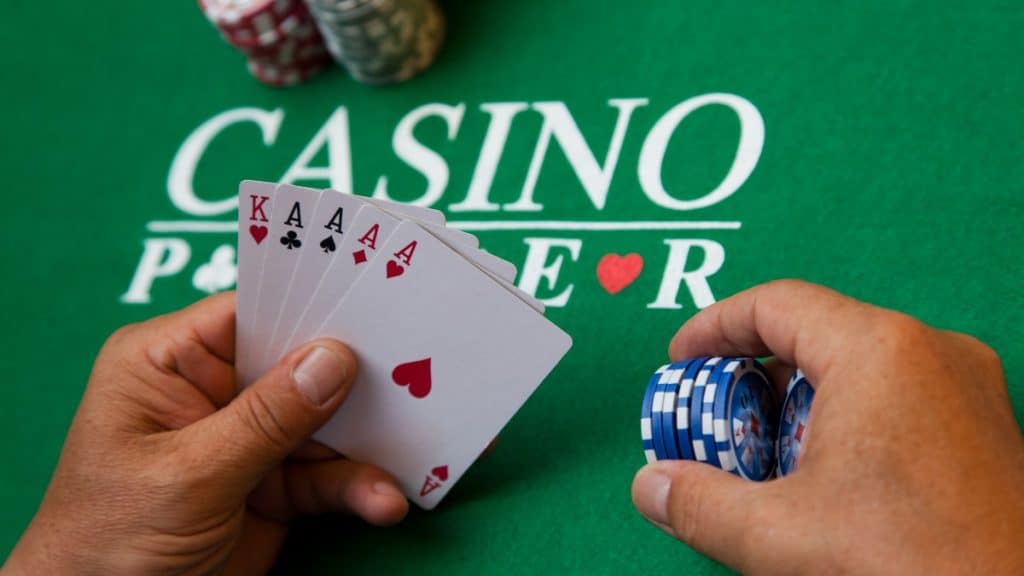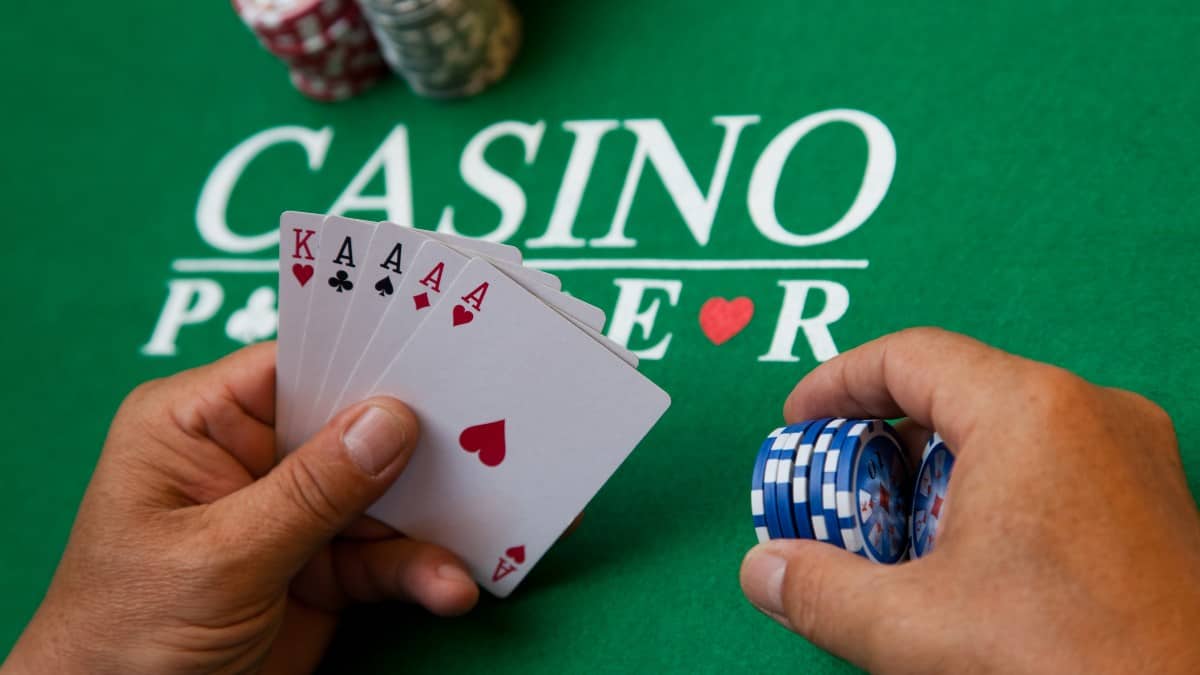
Slow Playing in Poker: When It Works (and When It Backfires)

There’s no more beautiful situation in poker than flopping the nuts. Your only concern is maximizing value, so you’re happy to check behind when the action comes to you.
What’s the harm in a free card, right?
In fact, you’re so confident in your hand that you happily check again on the turn. You’re setting your opponent up to get stacked on the river, after all.
…and then that third spade hits, and they shove their entire stack into the middle.
If you’ve been in situations like this, then you know how difficult slow playing can be. Do it right, and you could win a ton of chips. Do it wrong, and you could be the one getting hurt.
Below, we’ll walk you through what to consider before you slow play, as well as outline a few situations in which slowing down is almost always a bad idea.
What is Slow Playing in Poker?
Slow playing is the practice of either checking, calling, or betting a small amount when you have a big hand.
The idea is to fool your opponent about the strength of your holdings. By slow playing, you give the appearance of weakness, which hopefully entices them to overvalue their own hands and pay you off more than they would have if you’d shown strength from the beginning.
For example, let’s say you make the nut flush on the turn and your opponent bets into you. If you raise, you run the risk of revealing your hand. However, if you call, it might cause your opponent to discount the possibility that you have the flush, and they may call a raise on the river that they wouldn’t have called on the turn.
When Slow Playing Works
Before we get into the general rules for slow playing, it’s important to understand that, like anything else in poker, slow playing exists in a dynamic and changing environment.
You should be zigging when your opponents zag. If everyone at your table is following the guidelines below, then it would be in your best interest to deviate from them occasionally.
That being said, here are a few times when you should consider slow playing.
The Board is Dry
The inherent risk of slow playing is that you might allow your opponent to catch a card that allows them to beat you. That’s less likely on dry, unconnected boards.
Let’s consider the same hand on two different boards. You hold J♦️J♠️.
Board 1: J♥️6♣️2♠️
Board 2: J♥️T♥️5♣️
Slow playing is much safer on Board 1. There simply aren’t very many cards that can potentially beat you; the only risk is if someone’s holding an inside straight draw or has an overpair that could hit a bigger set, but those risks are negligible.
Board 2, on the other hand, is a complete minefield. Your opponent could have any number of straight or flush draws, so there are a lot of cards that could come later in the hand that could beat you (or at least scare you enough to prevent you from getting full value).
Your Opponents Are Aggressive
The primary goal behind slow playing is that by disguising your hand, you put yourself in a position to win a much bigger pot than you otherwise would have.
It’s basically impossible to win a huge pot by checking against players who never bet.
With passive players, it’s generally a better idea to just do the betting yourself. These players tend to call too much anyway, so you can get three streets of value by betting all the way.
If you’re against aggressive players, however, showing weakness could encourage them to try to bully you. They may smell weakness and try to force you out of the pot by firing a ton of chips at it — and all you have to do is let them bet and try to hide your smile.
This also has the metagame advantage of making aggressive players slow down when you show weakness. If they know you slow play at least some of the time, they’ll be less likely to try to bluff you every time you check.
You’re Heads-Up
There’s much less danger against a single opponent than there is in a multiway pot, so giving free/cheap cards is less likely to come back to bite you.
Also, remember that you’re trying to win a huge pot here. It’s usually better to make smaller bets and try to get value from several opponents than it is to give a free card to all of them.
To Balance Your Range
Above all, slow playing works best when it’s part of a balanced strategy.
You shouldn’t slow play all of your monster hands — but that doesn’t mean you should never slow play.
Also, you’ll want to incorporate some “slow play bluffs” into your range; using the example above, you should occasionally make a delayed raise on a connected board to create the impression that you were slow playing. Otherwise, your true slow plays are less likely to get paid off.
When Slow Playing Backfires
Now that we’ve talked about some situations when slow playing is a valid strategy, let’s look at some times when you should be more inclined to bet your strong hands forcefully.
The same caveat as above applies in regards to changing table dynamics, of course. Also, we’re not looking at situations that are simply the opposite of the examples above (like wet boards, for example).
When It Actually Makes You Look Stronger
There are times when checking behind doesn’t look weak, but rather screams, “I have a monster hand.”
An example is if you raise the preflop and two aces hit the board. Even if that didn’t hit you, it appears like it did, and so your opponents expect you to bet. Checking doesn’t make it look like you’re scared of the aces; it makes it look like you’re just baiting the hook.
In these situations, it’s usually best to just make a modest wager and hope that someone has something worth calling with.
However, sometimes you have the deck so crippled that you can’t help but check.
Using the example above, let’s say you hold A♦️A♠️ and then the flop comes A♥️A♣️2♠️. Besides a set of twos, there’s just nothing your opponent can possibly have that’s worth calling with, so it’s best to just check it in hopes they’ll make enough of a hand to give you a little bit of value later on.
You’re at a Table Full of Maniacs or Calling Stations
Some players just like putting chips into the pot. Whether that means they’re maniacs who raise at every opportunity or calling stations who can’t find a fold to save their lives, it would be a shame to deprive them of an opportunity to give you some of their chips.
Against these players, there’s no need to be cute. Just bet your hand. It’s the easiest, most foolproof way to get full value out of your biggest hands.
The Pot is Already Big
If the pot is already bloated, then there’s tremendous value in just taking it down and not adding any unnecessary risk into the equation.
More than that, though, players will find it very hard to fold in huge pots. If that’s the case, you don’t want to miss an additional street of value by being tricky.
The Poker Slow Play Belongs in Your Toolbox, But Use It Sparingly
Many inexperienced players slow play far too frequently, as they let the thrill of setting a trap for their opponents overshadow the risks of getting outdrawn or not getting full value.
Don’t get us wrong: slow playing absolutely should be part of your strategy. But ask yourself why you’re slow playing, what you hope to gain from it, and what could possibly happen later on in the hand to cause it to backfire on you.
Ultimately, slow playing is just one more tool in your toolbox. It should be something you’re fully capable of doing — but fully capable of passing up as well.